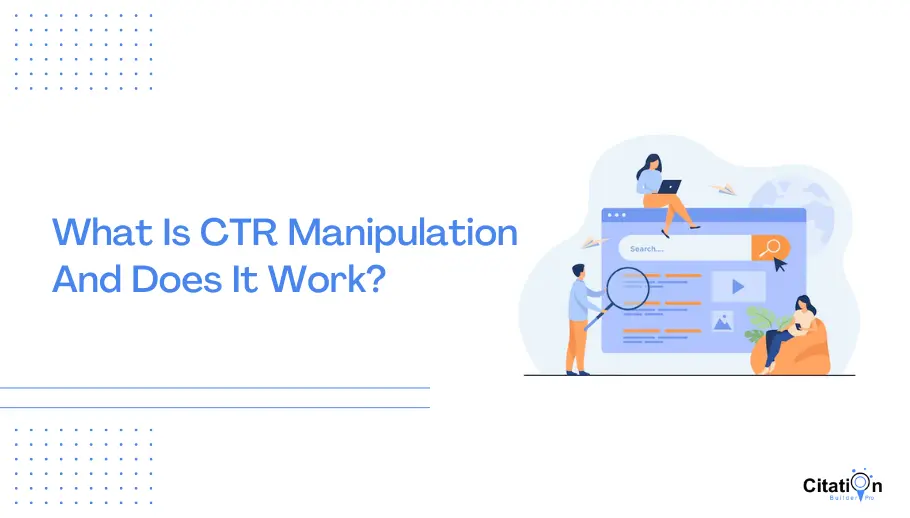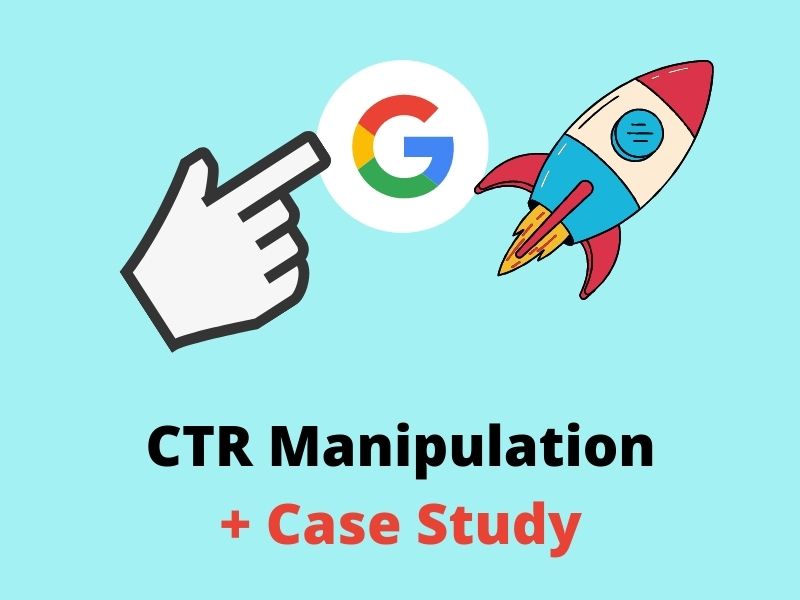Optimize Your Online Impact with LinkDaddy CTR Manipulation Solutions
Optimize Your Online Impact with LinkDaddy CTR Manipulation Solutions
Blog Article
Enhancing Organic Click-Through Rates With CTR Manipulation
The optimization of natural click-through rates (CTR) is a nuanced endeavor that rests on recognizing both individual psychology and effective web content presentation. By leveraging calculated adjustment techniques, such as strongly crafted headings and visually engaging aspects, marketing professionals can considerably improve customer involvement. However, the landscape is swarming with false impressions and oversimplifications about what really drives CTR. As we explore the ins and outs of these approaches, it becomes vital to determine the underlying principles that can cause continual success in recording target market focus. What absolutely distinguishes the reliable from the ineffective in this crucial aspect of digital marketing?
Recognizing Click-Through Fees
Recognizing click-through prices (CTR) is essential for assessing the efficiency of on the internet advertising methods. CTR gauges the percent of individuals who click on a particular link or advertisement contrasted to the complete variety of individuals who view it. A higher CTR suggests that the content is engaging and pertinent to the target audience, while a reduced CTR might signify a demand for optimization.
To determine CTR, divide the number of clicks by the variety of impacts and increase by 100. For circumstances, if an advertisement obtains 300 clicks out of 10,000 impacts, the CTR would be 3%. This statistics is vital for evaluating various aspects of electronic advertising and marketing, including seo (SEO), e-mail campaigns, and social media sites advertising.
Furthermore, assessing CTR assists online marketers recognize which techniques produce the most effective outcomes and which need refinement. By concentrating on improving CTR, companies can enhance their web content's presence and efficiency, causing enhanced traffic and prospective conversions. Understanding the nuances of CTR is fundamental for any type of online marketer intending to optimize their on the internet visibility and optimize return on investment (ROI)

The Psychology of Customer Actions
User behavior is substantially affected by mental factors that determine how people communicate with on the internet web content. Comprehending these factors is crucial for enhancing click-through prices (CTR) in organic search outcomes.
Emotional actions also dramatically impact individual actions. Material that reverberates emotionally can activate a feeling of seriousness or inquisitiveness, prompting individuals to click. In addition, social proof-- such as individual testimonials or ratings-- can improve trust fund and encourage interaction, as people often seek to the actions of others to educate their own choices.
In addition, the principle of scarcity can drive clicks - CTR Manipulation Press Release. Limited-time deals or exclusive content produce a concern of missing out on out (FOMO), compelling users to act rapidly. Comprehending these emotional vehicle drivers allows online marketers to produce more compelling material that reverberates with their target market
Effective CTR Manipulation Techniques
Leveraging psychological insights can substantially improve click-through prices (CTR) with targeted control methods. Among the most efficient techniques is using compelling headlines that evoke inquisitiveness or seriousness. Phrasing titles as concerns or integrating numbers can attract more focus, motivating customers to click.
An additional method includes optimizing meta descriptions to develop a feeling of significance and immediacy. By clearly describing the solutions or advantages supplied in the material, you can engage possible visitors and convince them to click. Additionally, making use of power words-- such as "special," "shown," or "totally free"-- can boost the allure of your material.
Visual components likewise play a vital function. Incorporating distinctive photos or thumbnails can draw users in and boost CTR. A/B testing various visuals can assist identify which photos reverberate best with your target market.
Finally, ensuring that your web content guarantees deliverable value brings about higher CTR. They are much more most likely to engage when individuals perceive that clicking will certainly provide them with significant understandings or services. By using these techniques attentively, marketing experts can successfully manipulate CTR to their benefit while keeping honest standards.
Usual Misconceptions About CTR
Numerous mistaken beliefs surround click-through rates (CTR) that can lead marketers to make misdirected choices. One prevalent myth is that a greater CTR constantly translates to much better efficiency. While a high CTR recommends that even more users are clicking, it does not ensure sales or conversions. Ultimately, the effectiveness of web traffic relies on the top quality of the landing page and the significance of the web content.
Another common belief is that CTR is an isolated metric. In truth, CTR should be evaluated in combination with other efficiency indications, such as bounce rate and conversion rate, to gain a holistic view of project success.
In addition, some marketers think that maximizing for CTR alone is adequate. Concentrating solely on CTR can lead to clickbait techniques that may attract clicks but fall short to involve customers meaningfully. CTR Manipulation. This method can harm brand credibility and result in lower retention prices
Last but not least, there is a concept that CTR approaches are globally effective. The truth is that optimal CTR methods can differ substantially throughout markets my latest blog post and target market, necessitating tailored techniques for various market sections. Understanding these misconceptions is crucial for review developing effective CTR strategies that line up with overarching marketing objectives.
Gauging CTR Success
Although high click-through prices (CTR) can suggest successful engagement with web content, determining their true success calls for a detailed analysis of several factors. First, it is important to comprehend the context in which the CTR is achieved. As an example, a high CTR on a deceptive title might not equate to meaningful interaction or conversions, ultimately mirroring badly on the brand's reputation.
2nd, evaluating the source of web traffic is crucial. Organic web traffic from internet search engine can signify a robust material method, while clicks from unnecessary sources might show an absence of targeting. Additionally, measuring the subsequent individual habits is crucial; examining metrics such as bounce price, time invested in web page, and conversion prices can give much deeper understandings right into the high quality of the involvement started by the CTR.

Conclusion

The optimization of natural click-through rates (CTR) is a nuanced venture that hinges on recognizing both user psychology and reliable material discussion. CTR measures the percent of users that click on a particular web link or ad contrasted to the overall number of customers who watch it. A higher CTR shows that the content is involving browse around this site and relevant to the target audience, while a reduced CTR may indicate a demand for optimization.
Focusing specifically on CTR can lead to clickbait strategies that might attract clicks however fall short to engage individuals meaningfully. Additionally, gauging the subsequent customer behavior is crucial; evaluating metrics such as bounce price, time spent on web page, and conversion prices can offer much deeper insights right into the top quality of the engagement started by the CTR.
Report this page